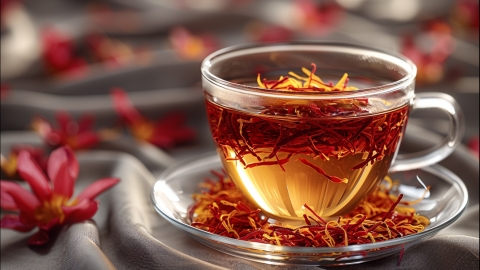What kind of tea is good for drinking with high blood sugar?
Teas such as are usually better choices for hyperglycemia.

1. Buckwheat Tea
Made from buckwheat, buckwheat tea is rich in active substances such as rutin, which can promote insulin secretion and help improve glucose metabolism. With a strong wheat aroma, it can be directly steeped in hot water, and drinking 2-3 cups daily can serve as a suitable substitute for some sugary beverages, helping control calorie intake without easily causing blood sugar fluctuations.
2. Corn Silk Tea
Corn silk tea has a sweet taste and neutral nature, and has traditionally been used to assist in regulating blood sugar levels. Brew dried corn silk in boiling water or steep it as tea. With a mild flavor, it can be consumed daily as a beverage. It is recommended to drink 1-2 times daily, each time using 10-15 grams of corn silk, which may help promote water metabolism and potentially stabilize post-meal blood glucose levels.
3. Green Tea
Green tea contains tea polyphenols, which enhance insulin sensitivity and inhibit sugar absorption in the intestines. Choose unfermented green teas such as Longjing or Biluochun, and steep with water around 80°C. Drinking 1-2 cups daily can help maintain stable blood sugar levels. Avoid drinking overly concentrated tea or on an empty stomach. Its refreshing taste can reduce cravings for sweets.
4. Mulberry Leaf Tea
Made from mulberry leaves, this tea contains alkaloids that inhibit glycosidase activity, slowing the breakdown of carbohydrates into glucose. Steep an appropriate amount of dried mulberry leaves to make tea, and drink twice daily, preferably about half an hour after meals. This can help regulate post-meal increases in blood sugar. It is mild in nature and generally well tolerated by most people.
5. Gynostemma Tea
Gynostemma tea, often called "plant insulin," contains saponins that may promote insulin secretion from pancreatic cells. Steep tender gynostemma leaves like tea and drink 2-3 cups daily; it has a slightly bitter taste with a sweet aftertaste. It is recommended to choose processed tea products, which have reduced cold properties and are more suitable for long-term consumption, assisting in improving glucose metabolism disorders.
Tea is only an adjunctive method for regulation and cannot replace medical treatment for diabetes. Consumption should be moderated, avoid drinking large amounts before bedtime as it may affect sleep, and should be taken 1-2 hours apart from hypoglycemic medications, insulin, or other treatments.




